How is Swiss cheese made?
Categories: Europe | Food and Drinks | Production
By Pictolic https://pictolic.com/article/how-is-swiss-cheese-made.htmlIn Gruyères, in Western Switzerland, from mid-May to mid-October, cows of the Müritz family graze on excellent mountain pastures, from whose milk the world-famous Gruyère cheese is produced. The fifth generation of this family has been producing cheese according to an old recipe.
Gruyere cheese is made in the form of huge heads, each of which weighs from 25 to 40 kilograms, after which it is sent to ripen for at least six months. During the season, up to 200 heads are made from unpasteurized milk, which cheese makers sell at the local market. Gruyère cheese itself began to be made about five hundred years ago, when peasants living high in the mountains faced difficulties in transporting milk to the valleys. Then they decided to cook the cheese on site and then leave it in the caves. The result is a variety with a sweet-salty taste, the aroma of which changes with age and becomes more intense. The cheese heads themselves gradually become covered with cracks.
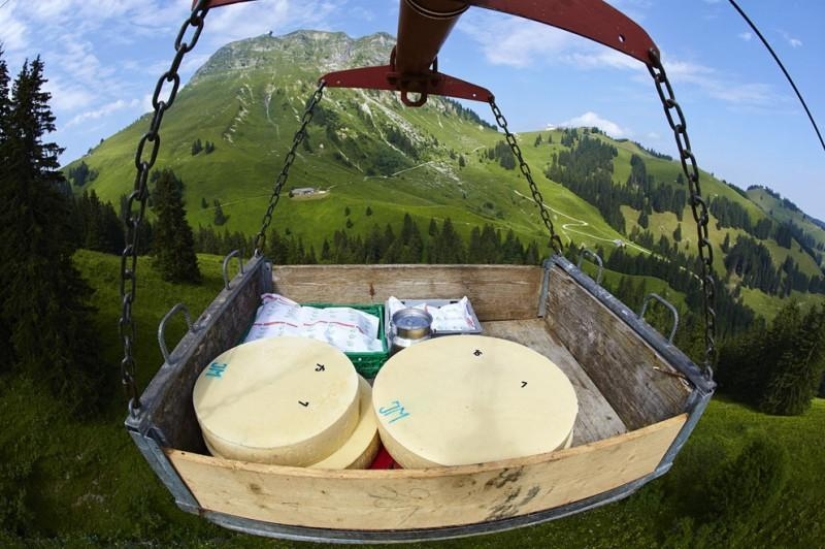
During the preparation process, farmers first heat milk in a copper vat to 34 degrees, add liquid enzyme for ripening, and separate the whey from the resulting curd. After this, the cottage cheese is salted and heated to 43 degrees, and then placed under a press and sent for ripening.
It is noteworthy that even the requirements for the storage room for Gruyère are prescribed in Swiss law in order to comply with the original “cave” conditions, although now the cheese is ripened in special cellars.
Reuters photographer Denis Balibouse covered the work of cheesemakers throughout the 2013 summer grazing season. In this collection you will find his photographs.
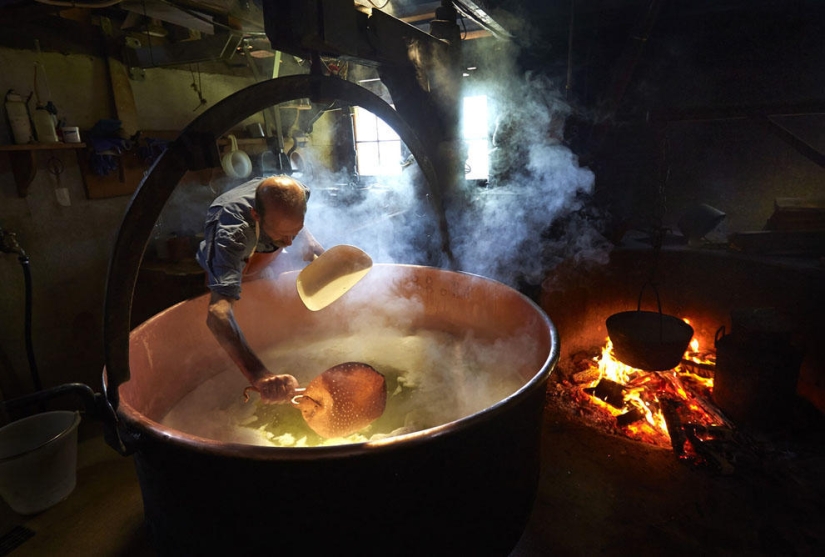 Cheesemaker and farmer Jacques Muritz prepares whey in Gruyères, western Switzerland, on June 13.
Cheesemaker and farmer Jacques Muritz prepares whey in Gruyères, western Switzerland, on June 13.
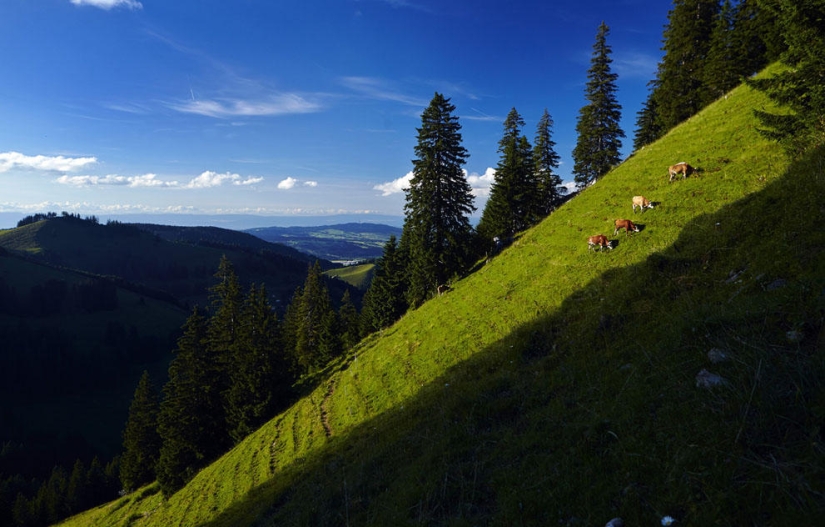 2. Cows graze in a field on a mountain pasture in Gruyères, Switzerland, on July 30.
2. Cows graze in a field on a mountain pasture in Gruyères, Switzerland, on July 30.
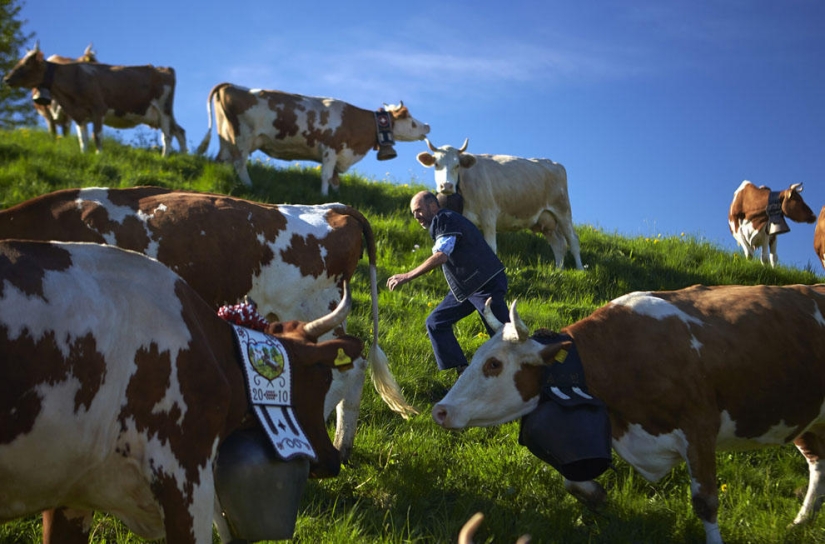 Farmer Jacques Murtz gathers his cows on the first day of the season in Gruyères, Switzerland, May 8.
Farmer Jacques Murtz gathers his cows on the first day of the season in Gruyères, Switzerland, May 8.
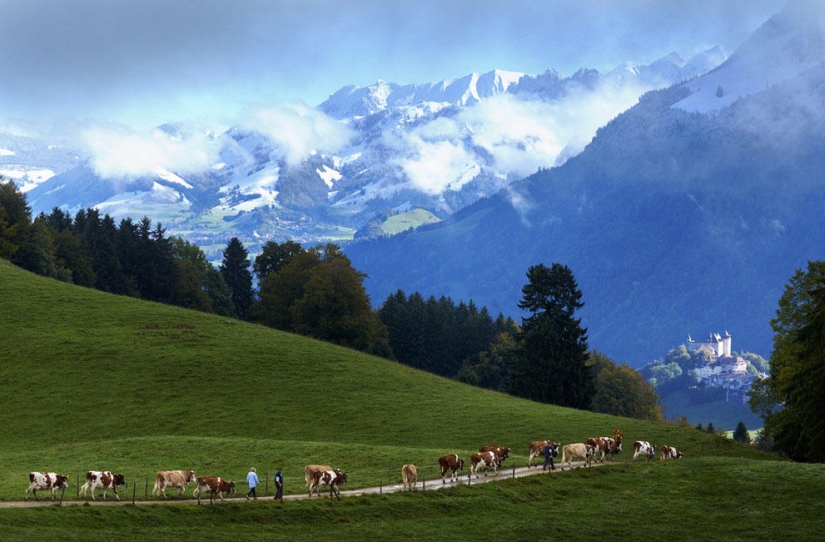 4. Members of the Müritz family and their workers walk along the path towards Gruyère Castle with a herd of cows for "rindia" (a dialect word meaning return to the plain) on the last day of the season in Gruyères, October 12.
4. Members of the Müritz family and their workers walk along the path towards Gruyère Castle with a herd of cows for "rindia" (a dialect word meaning return to the plain) on the last day of the season in Gruyères, October 12.
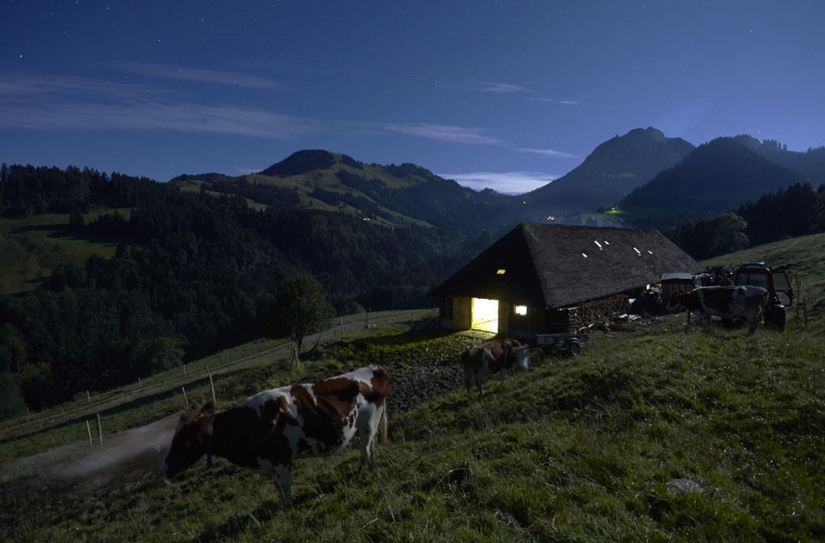 5. Cows stand in a mountain pasture after morning milking under the full moon in Gruyères on September 20.
5. Cows stand in a mountain pasture after morning milking under the full moon in Gruyères on September 20.
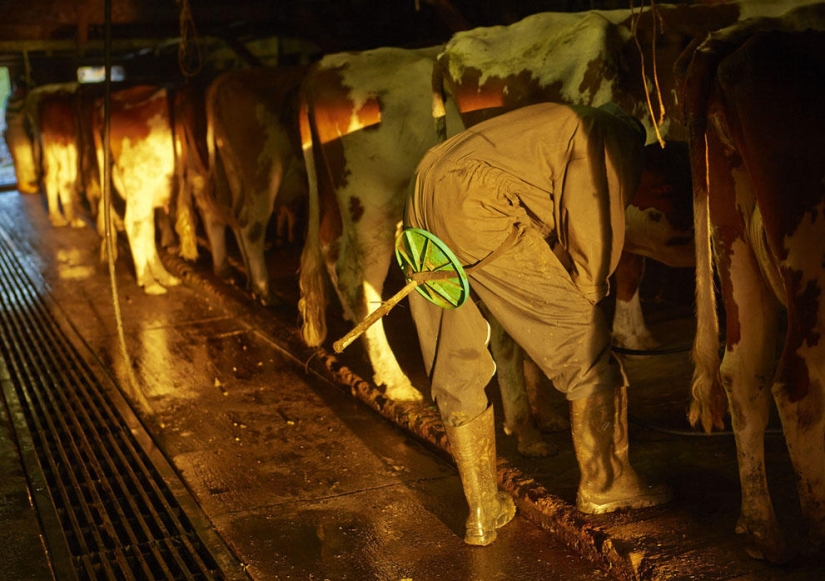 6. Cheesemaker and farmer Alexander Müritz milks cows in a pasture in Gruyères, June 13.
6. Cheesemaker and farmer Alexander Müritz milks cows in a pasture in Gruyères, June 13.
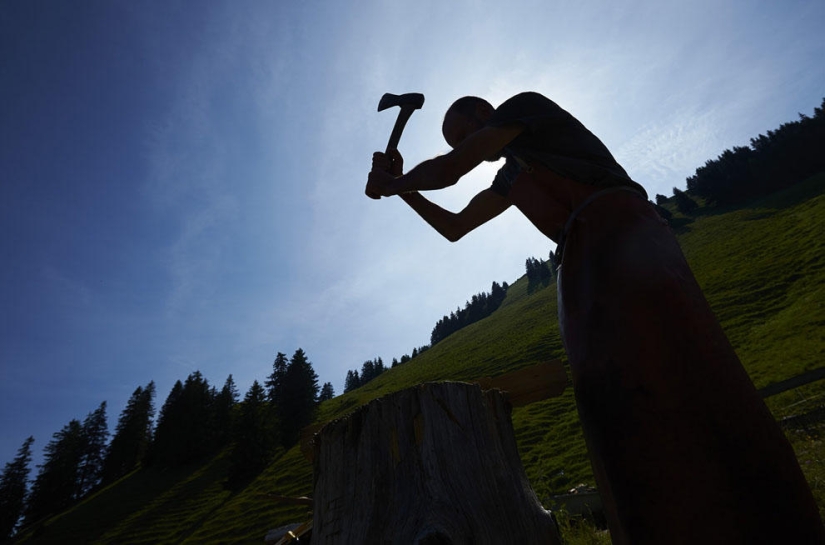 7. Cheesemaker Jacques Muritz chops wood for a fire in a mountain pasture in Gruyères, July 10.
7. Cheesemaker Jacques Muritz chops wood for a fire in a mountain pasture in Gruyères, July 10.
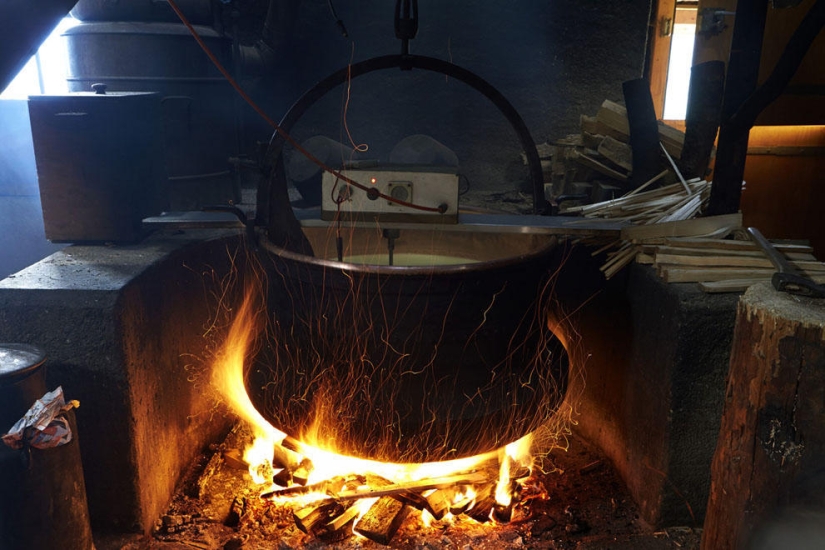 8. Milk is heated in a huge copper vat, just like hundreds of years ago, on September 20.
8. Milk is heated in a huge copper vat, just like hundreds of years ago, on September 20.
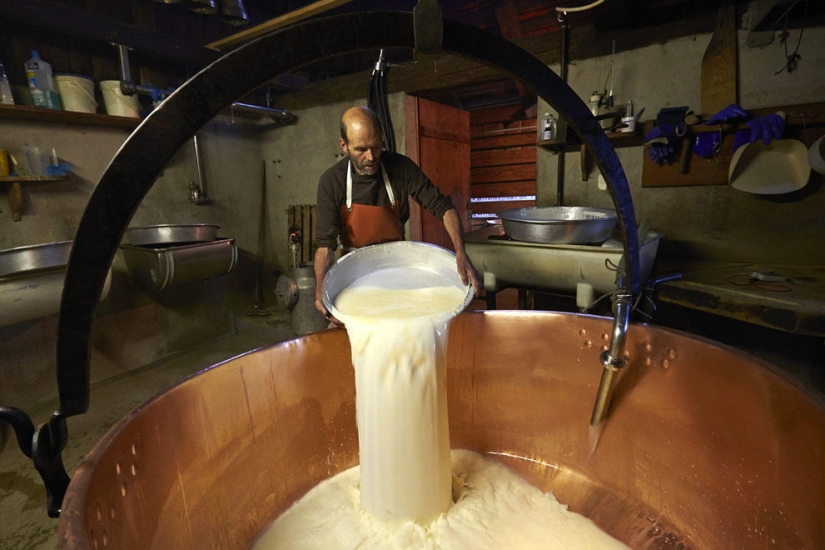 9. Jacques Muritz pours a bucket of skim milk into a copper vat, June 13.
9. Jacques Muritz pours a bucket of skim milk into a copper vat, June 13.
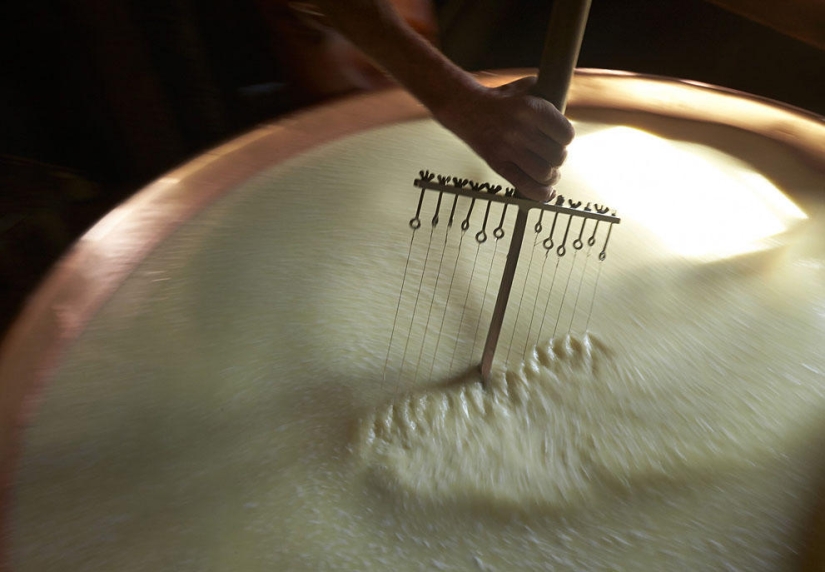 10. Jacques Muritz breaks curd grains in a vat on a mountain pasture in Gruyères, July 10.
10. Jacques Muritz breaks curd grains in a vat on a mountain pasture in Gruyères, July 10.
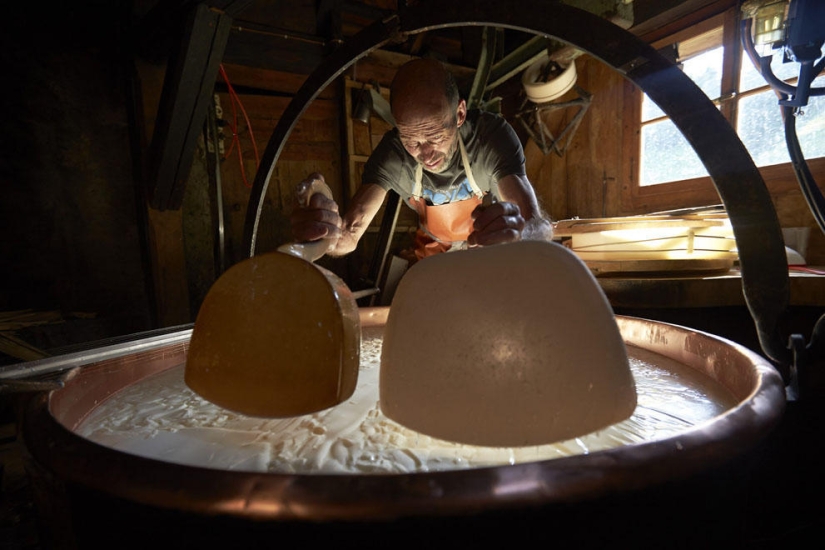 11. Jacques Muritz stirs cheese in a vat in Gruyères, July 10.
11. Jacques Muritz stirs cheese in a vat in Gruyères, July 10.
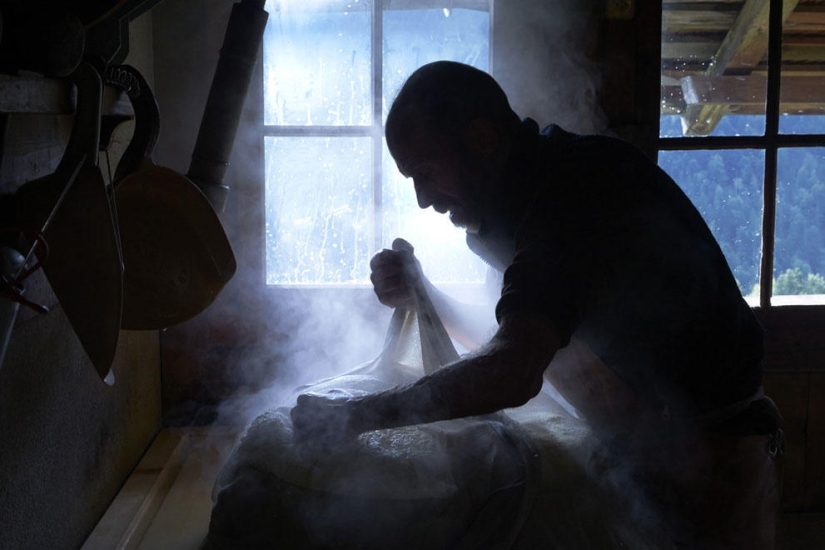 12. Using cheesecloth, Jacques Muritz shapes cheese into a large wheel in a chalet on a mountain pasture, September 20.
12. Using cheesecloth, Jacques Muritz shapes cheese into a large wheel in a chalet on a mountain pasture, September 20.
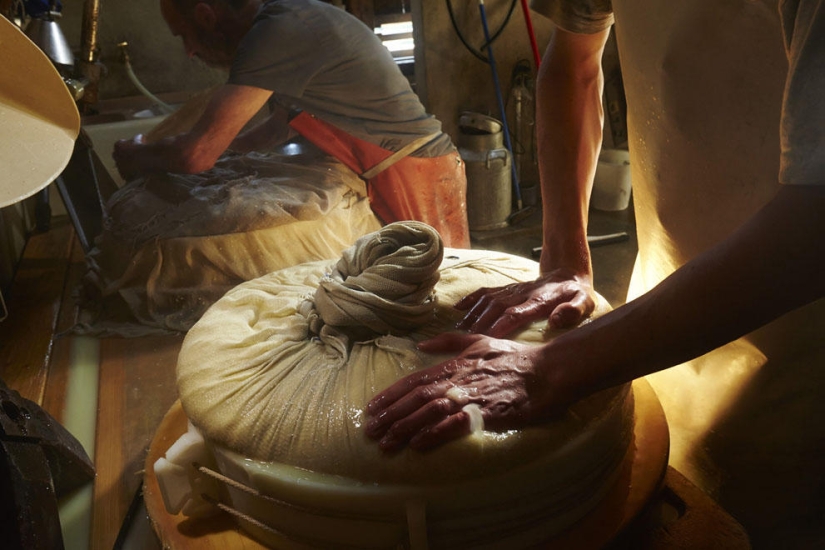 13. Jacques Muritz (left) and his son Alexandre press new wheels of cheese in a chalet on a mountain pasture in Gruyères, July 7.
13. Jacques Muritz (left) and his son Alexandre press new wheels of cheese in a chalet on a mountain pasture in Gruyères, July 7.
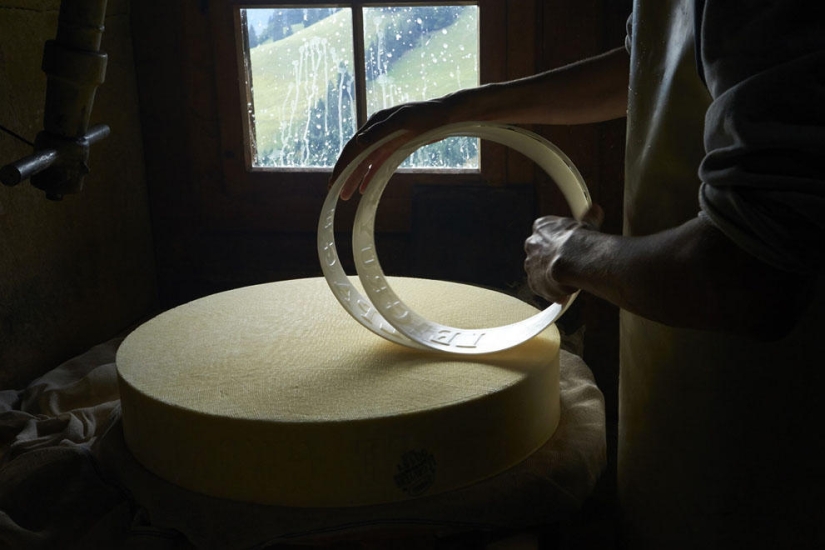 14. Alexander Müritz removes molds after shaping a wheel of cheese in a chalet on a mountain pasture, September 20.
14. Alexander Müritz removes molds after shaping a wheel of cheese in a chalet on a mountain pasture, September 20.
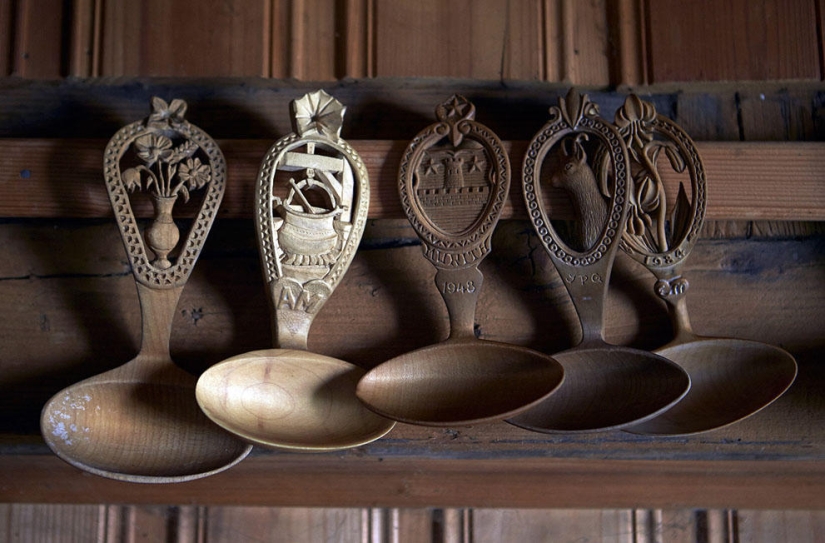 15. Traditional carved wooden spoons hang on hooks in a chalet on a mountain pasture, July 31.
15. Traditional carved wooden spoons hang on hooks in a chalet on a mountain pasture, July 31.
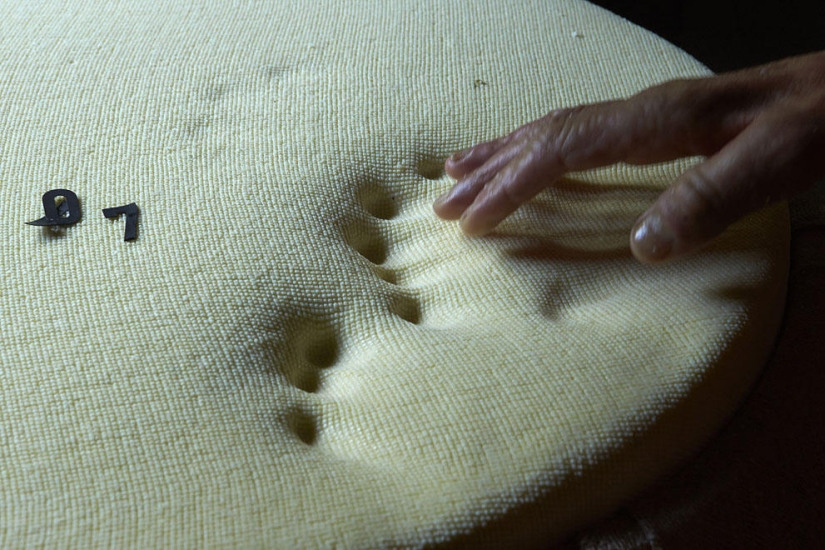 16. Cheesemaker Jacques Muritz tests young cheese with his finger on July 10.
16. Cheesemaker Jacques Muritz tests young cheese with his finger on July 10.
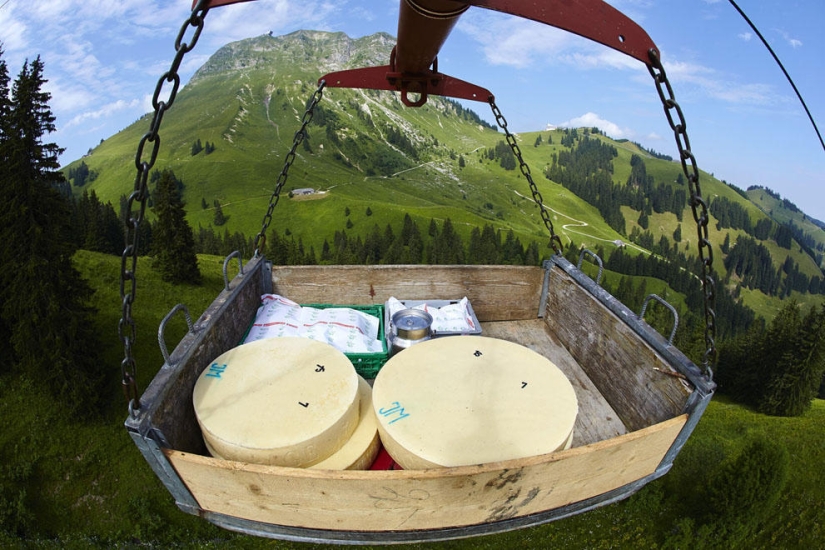 17. Freshly prepared wheels of cheese travel down a cable car to be delivered to the cellar of Gruyere Castle in western Switzerland on July 17.
17. Freshly prepared wheels of cheese travel down a cable car to be delivered to the cellar of Gruyere Castle in western Switzerland on July 17.
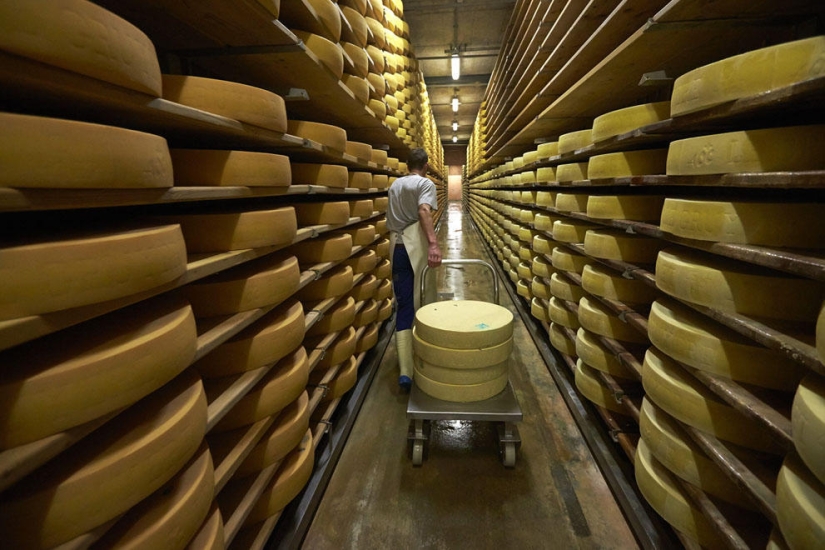 18. Alexander Muritz on a cart carries wheels of cheese for ripening in the cellar in Gruyères, July 7.
18. Alexander Muritz on a cart carries wheels of cheese for ripening in the cellar in Gruyères, July 7.
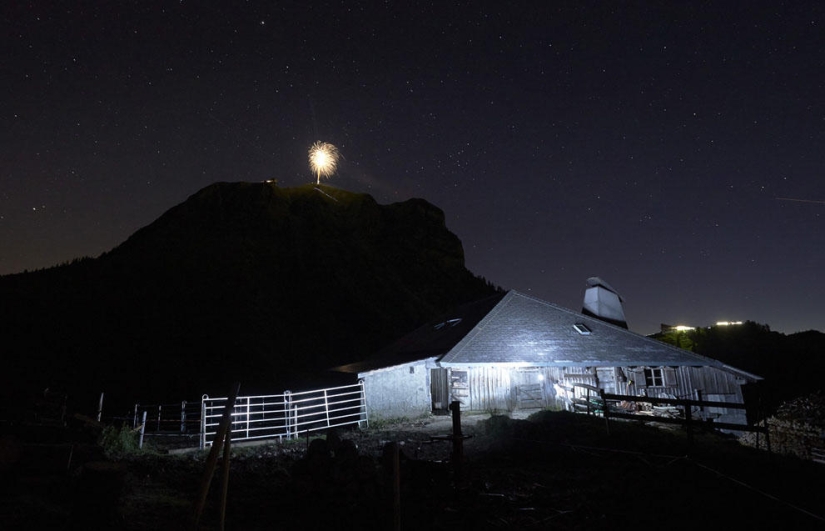 19. Fireworks are launched from the top of Mount Moleçon on Swiss National Day at the Tsermont chalet on a mountain pasture in Gruyères, July 31.
19. Fireworks are launched from the top of Mount Moleçon on Swiss National Day at the Tsermont chalet on a mountain pasture in Gruyères, July 31.
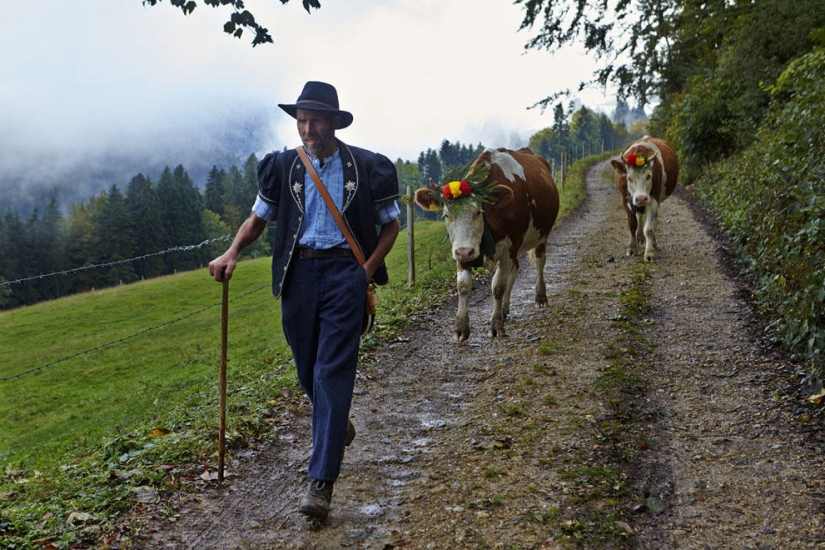 20. Jacques Muritz wanders along the road on the last day of the season in Gruyères, October 12.
20. Jacques Muritz wanders along the road on the last day of the season in Gruyères, October 12.
 21. A cross above the entrance to the Tsermont chalet on a mountain pasture in Gruyères on July 31.
21. A cross above the entrance to the Tsermont chalet on a mountain pasture in Gruyères on July 31.
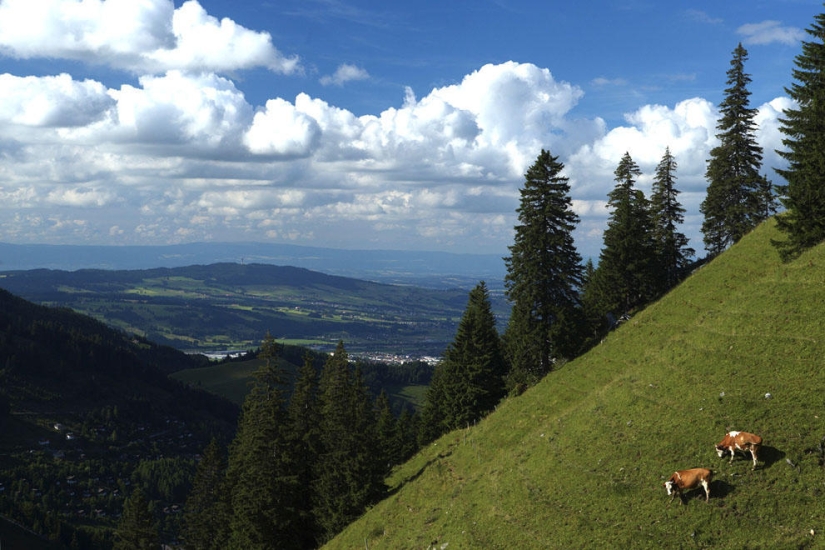 22. Cows graze on a mountain pasture in Gruyères, July 30.
22. Cows graze on a mountain pasture in Gruyères, July 30.
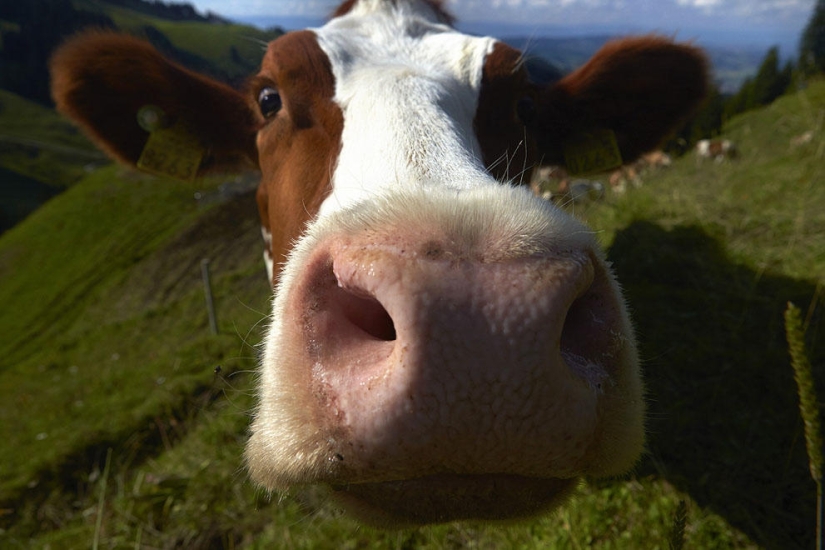 23. A curious cow on a mountain pasture in Gruyères, Switzerland, July 30.
23. A curious cow on a mountain pasture in Gruyères, Switzerland, July 30.
Recent articles

Jacques-Henri Lartigue (1894-1986) is perhaps the most famous "amateur" in the history of photography. The art world discovered his ...

It turns out that an active lifestyle is useful not only for the body but for the brain. Exercise strengthens muscles and spirit, ...

Most major companies profanity is not encouraged. It is considered that the profanity — it is a sign of disrespect for ...